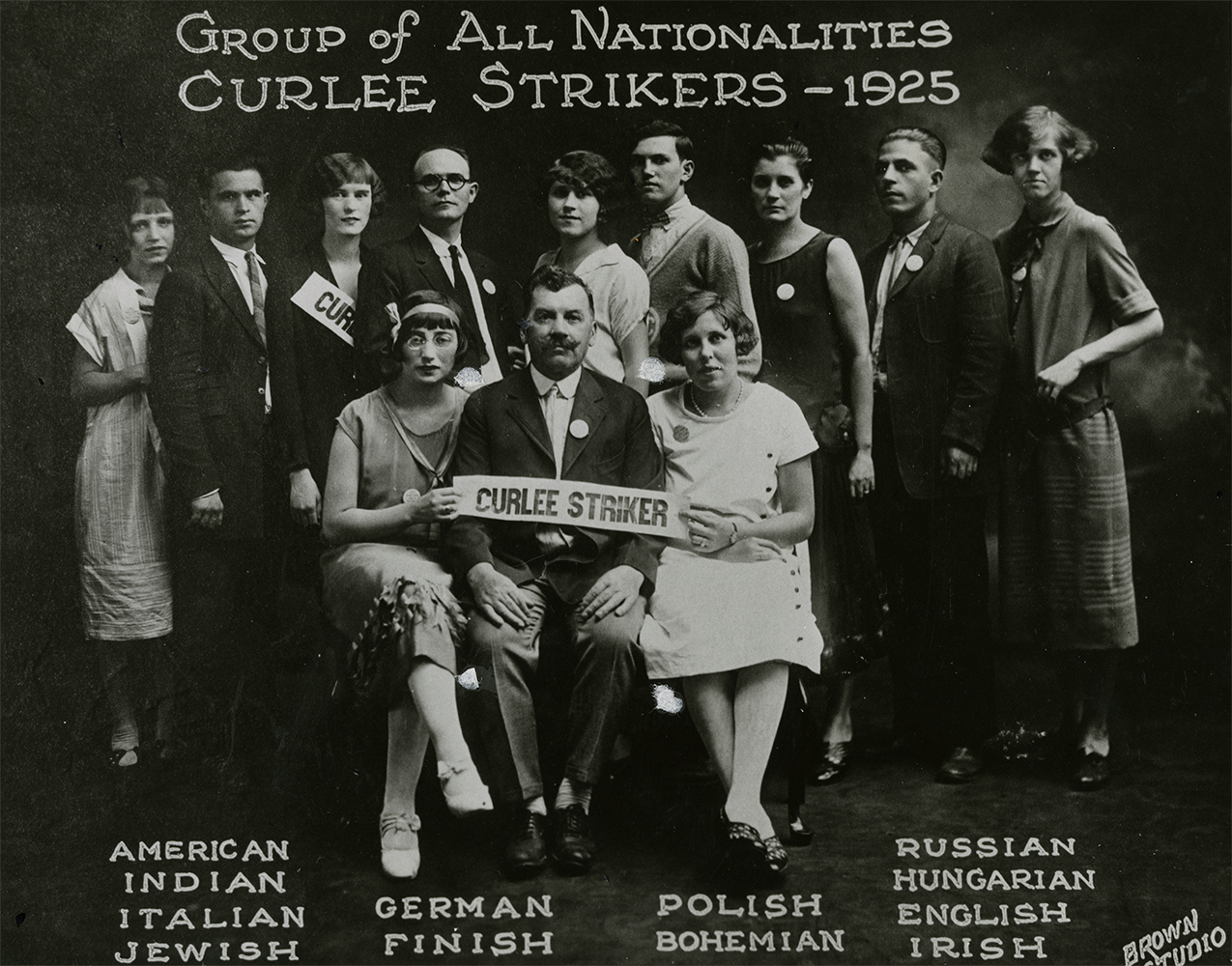
Amalgamated Clothing Workers of America members, representing a wide range of national and ethnic backgrounds, on strike at Curlee Clothing Company, St. Louis, 1925. AFL-CIO Still Images, Morris B. Schnapper Collection.

The International Ladies Garment Workers Union who participated in the Uprising of the 20,000 walked by this dread notice that often went up on the sweatshop wall during the busy season.
Kheel Center.
Intertwining into the booming industrial economy of Connecticut, Italian immigrant women faced prejudice. As they did in Southern Italy, Italian women were no strangers to communal protests. Back in Italy, they created unions, calling themselves, “Fasci Femminili”. In the early 1930’s, these women brought the tradition of protests back to life. During this time, Italian women comprised the majority of employees in New Haven’s garment industry. However, without a strong leader, or union contracts, these women worked through horrible working conditions and low pay. Soon after, they decided to use their hometown tactics. They took the streets by storm, demonstrating against injustices in the workplace and unfair taxes imposed by local government. Groups of women from cities such as New Haven, Boston, New York City, and Tampa rose together to win union contracts.. In a domino effect, more businesses in Connecticut signed union contracts. This influenced young women to feel empowered and invent their brand of industrial feminism. These women broke barriers, not only with their traditional gender roles, but by rising up together to regulate Connecticut’s thriving industries forever.

